Fender John 5 Telecaster Review
Ref: www.musicradar.com
There's a twin singlecoil, Bigsby vibrato toting option of the Custom Shop
J5 available too, but Fender has played it safe by sticking with the rocker-friendly
humbucker version for their Mexican axe.
Before we start pointing out the cool little details that set this guitar
apart from the rest of the Telecaster crowd, let's take a look at the basics.
Overview
Okay, body first. Underneath that glorious black paint, with its white
body binding on the top edge, is a generous slab of ash. Now, if we've
taught you anything about Telecasters, it's that ash is the Tele lover's
wood of choice. The other Fender wood of choice, alder, does a good job
but most connoisseurs of all things Telecaster agree that ash is, without
a doubt, the tonal business.
The neck is classic Fender. Fashioned from hardwearing maple and topped
with a good-looking rosewood fingerboard it has a vintage feel thanks to
its '60s-style 'C' profile. String bending is aided by some well-finished
medium jumbo frets – 22 of the blighters. And just so you know where you
are on the fingerboard, Fender has fitted large cream-coloured plastic
position markers designed to simulate vintage clay dots.
The neck is joined to the body with four screws, with the usual chrome
neck plate to protect the body. All pretty straightforward, but John 5
specified some cheeky little details on his Custom Shop signature guitars
and we're pleased to see them on our Mexican J5.
The most obvious deviation from the Fender Tele blueprint is that oversized
headstock. Originally spotted on Fender's rare XII 12-string Tele, it adds
a touch of visual flair to this six-string axe. The simple silver Fender
and Telecaster logos look pretty, too. There's actually a practical reason
for Mr 5's choice of headstock. There's a lot of space between the guitar's
top nut and the machineheads, which allows John the freedom to nail some
extreme behind the nut string bends. This is a technique used by Tele players
- most famously Jerry Donahue of The Hellecasters - to simulate a pedal
steel guitar. Remember, John 5 is a country guitarist as well as a shredder.
Before we move onto the body, we were pleased to find a set of Fender/Schaller
Deluxe staggered machineheads fitted to the headstock. The machinehead
shafts (the part the strings wrap around) are varied in height. The further
away from the top nut they are, the lower they get. This gives the required
string angle to stop the strings popping out of the top nut. Plus, it means
that Fender haven't had to fit string trees - or retainers - which can
cause tuning problems.
While the body is the classic Telecaster shape, there are a few cosmetic
details that make it a bit special. If you're a true Tele nerd you'll notice
that the body doesn't have the flattened body contour at the input plate,
where your leads goes in. Luckily, the other special features are dead
easy to spot. All that chrome should be a giveaway. Like Johnny's Custom
Shop doozies, this guitar has a veritable Hall of Mirrors of shiny bits.
The scratchplate is a sleek slice of chrome-plated brass that matches the
control plate and six-saddle bridge.
The control plate, with its pair of heavily knurled volume knobs looks
a little bit naked. That's because the switch that would normally soak
up the rest of the space there has been moved to the upper bout of the
guitar.
Mr 5 has chosen a Gibson-style three-way toggle switch instead of Fender's
usual three-way blade item. We think it looks pretty damn cool, but God
only knows what the Tele purists will make of it.
But this guitar is not designed for the purists. The J5 is a modern
rock guitar in a classic jacket. With all that cosmetic stuff covered,
all that's left are the bits that actually provide the noise.
Fender has loaded the J5 with an Enforcer humbucker at the bridge and
a Custom Shop Twisted Tele singlecoil at the neck. Yummy! These are the
pickups that Johnny 5 has nestling in his Custom Shop axes. Each of the
pickups has an independent volume control. There's no tone control, folks.
Sounds
This axe is heavy. We're talking about a really solid bit of kit here.
Telecasters can vary hugely in weight, but we have to say that this J5
is about the heftiest example we've ever entrusted our shoulders to, and
we reckon it plays a huge part in the fantastic sustain of the J5. It also
makes this guitar feel like a proper rock axe, not unlike the buzz you
get throwing a Les Paul around a bit. So, if you've always fancied a Telecaster
but prefer the feel of a heavier axe, the J5 could be the boy for you.
The neck is an absolute peach to play. The 'C' profile will not disgruntle
any guitar player, no matter what style of music you inflict on your audience.
The J5 comes fitted with a set of Fender Super 250L, nickel plated steel
strings (.009 to .042 gauge).
They feel just right for lead work. We would probably fit a set of .010s
for a bit more 'fight,' but the J5 plays great straight out of the box
so you might want to stick with the original setup.
The headstock design makes it really easy to do some crazy bends. It'll
take a bit of practice to do it like John 5, though. The pickups offer
a cracking range of rock and country tones. The bridge-mounted Enforcer
is a useful mix of brutishness and refinement.
Try to imagine Conan the Barbarian with delightful table manners. Treat
this pickup to some filth and the Enforcer will scorch the hair off anything
within a ten-mile radius. Okay, we're exaggerating a bit, but this guitar
could hold its own against any respectable rock axe.
The Twisted Tele neck pickup has slightly more edge than you'd expect
from a regular Tele but it's essentially a more vintage sound than that
of its bridge-hogging counterpoint. Both pickups clean up really well.
Like we said, the Enforcer can sound refined when you back off the beef.
Combine both units and you can get some cool tones when you play about
with the twin volume controls. You don't even miss not having a tone control
onboard. It's hard to imagine that even the Custom Shop model sounds better
than our J5.
At a penny shy of 700 sheets this J5 is no budget guitar. It's a total
bargain, however, when you compare it to the Custom Shop edition.
Fender have really done the business and come up with a modern rock
guitar that incorporates some classic 'retro' elements like that '60s neck
profile.
No doubt some players will be put off by the unusual headstock design
but if you're a Tele fan then you should at least give the J5 a go.
Country players will love the string bending potential at the top nut.
Rockers, metal heads and the great unwashed should try it, too. It's chunky,
funky and comes complete with a built-in mirror. You even get a padded
gig bag. What more could any guitarist want?





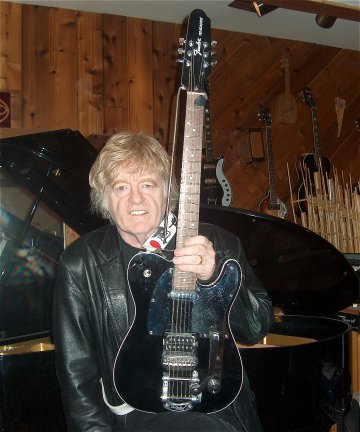 .
.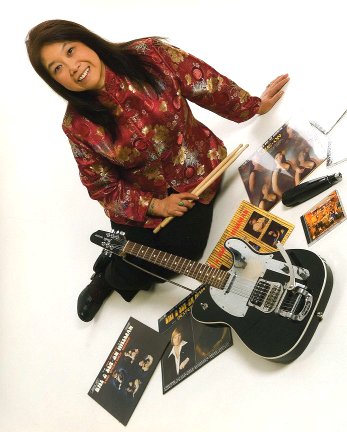 .
.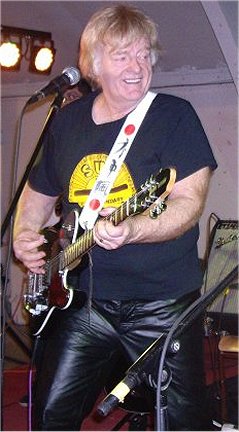
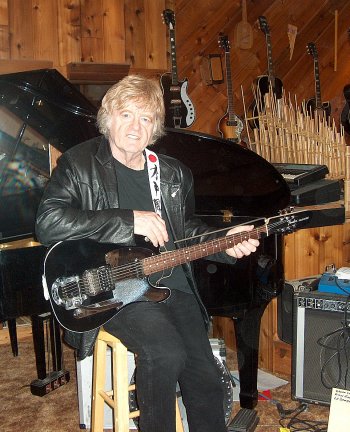
![]()
![]()
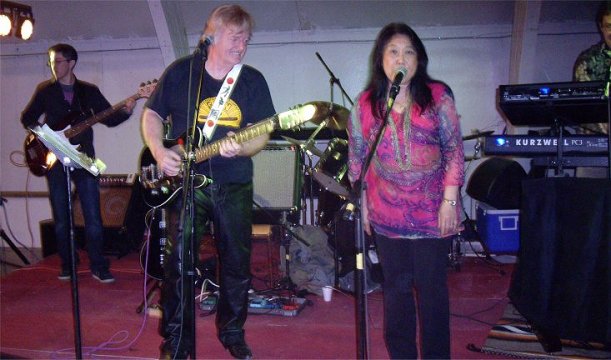
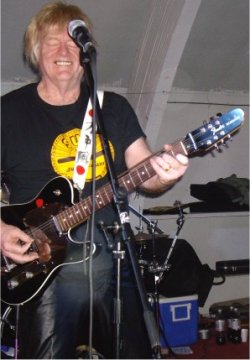
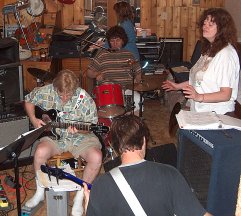
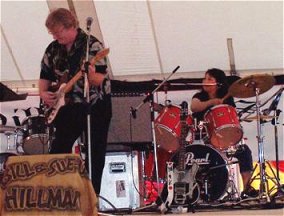
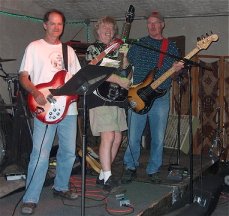
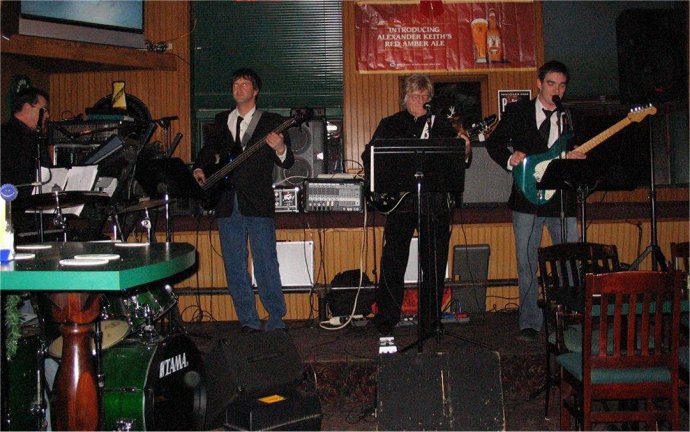
![]()



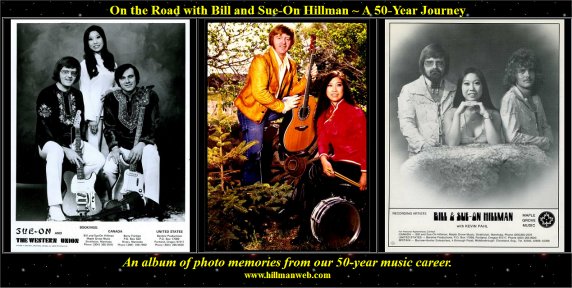
![]()